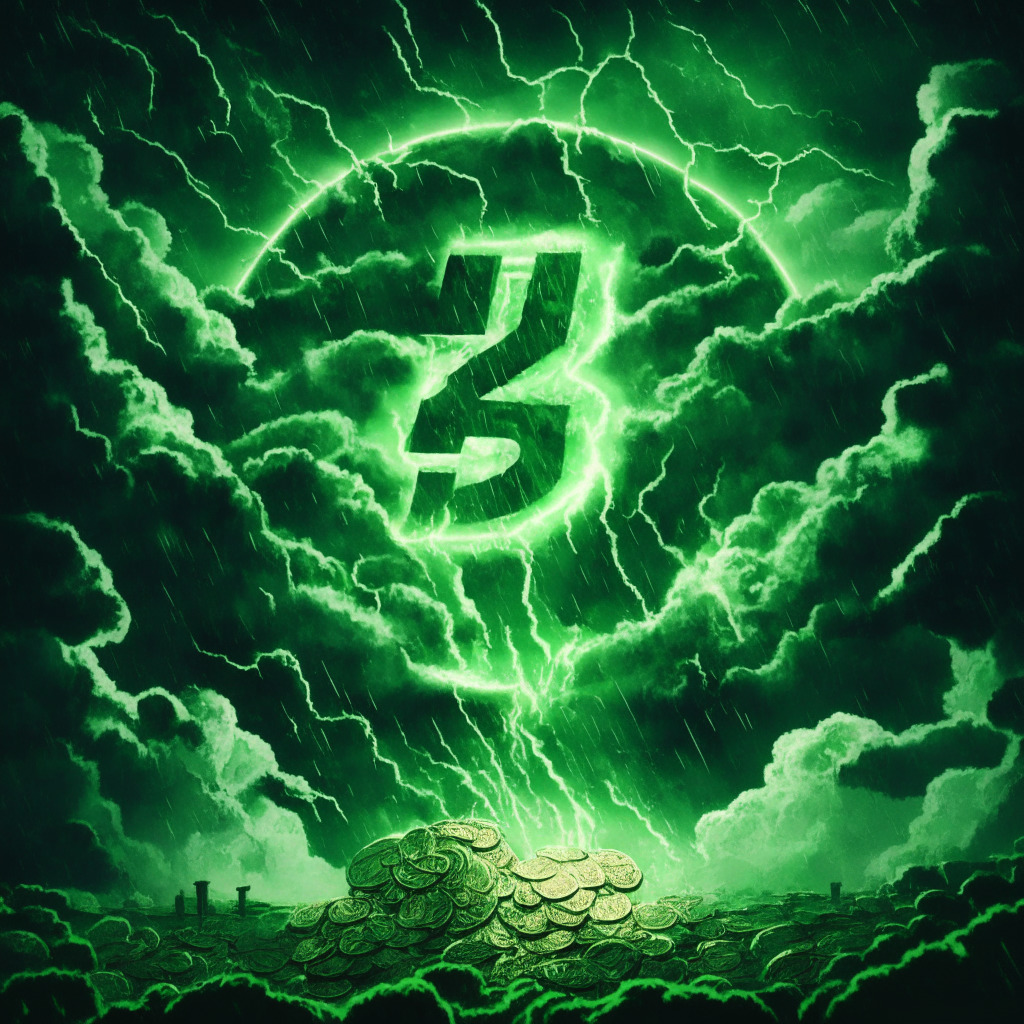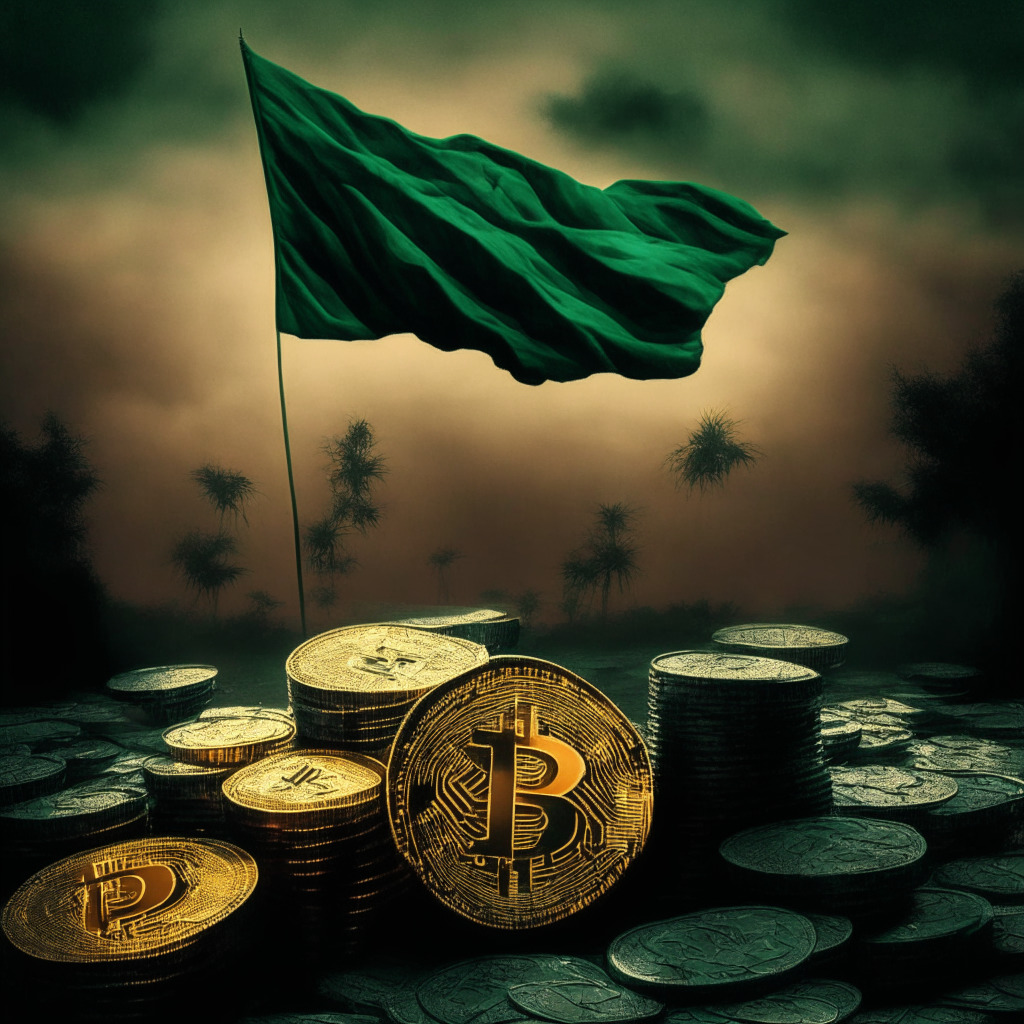The SEC’s ruling against Ripple and the increasing interest in crypto ETFs have propelled U.S. lawmakers to consider clear regulatory pathways for digital assets. Notable legislation under discussion includes the Financial Innovation and Technology for the 21st Century Act, Responsible Financial Innovation Act, Digital Asset Anti-Money Laundering Act, and Digital Asset Market Structure bill. These will shape the future crypto industry.
Search Results for: Reliance
Dissecting the Roles of DApps vs Protocols in the Decentralized Ecosystem
“DApps are software programs run on a decentralized network of computers, assuring immutability, security, and transparency. Meanwhile, protocols refer to the underlying rules and standards defining decentralized network operations. Both play distinct roles within the decentralized ecosystem, aiding blockchain’s steady ascent.”
Cerebras and G42’s AI Supercomputer Partnership: A Game Changer or Risky Gamble?
“Cerebras Systems partners with UAE-based G42 to create a $100M AI supercomputer, possibly generating up to 36 exaFLOPs of AI computing. This could revolutionize sectors like healthcare and energy. However, American manufacturing and competitive challenges could disrupt plans.”
Revolutionizing Crypto Exchanges: Unveiling the Interplay of AI and Cryptocurrency
Gracy Chen, the managing director of Bitget, highlights the company’s integration of AI in various areas including translations, customer service, and an AI-powered chatbot for efficient data access and trading strategies. Bitget also explores zero-knowledge proof (ZK-proof) technology for improved data protection and user fund custody, indicating the transformative potential of combining AI and cryptocurrency.
Scalable Solutions Propel DeFi: A Look into zkEVM Rollups and Linea Integration
“The integration of Consensys-developed scalable solution, Linea, by Symbiosis—a prominent DeFi liquidity protocol, could revolutionize the landscape by effectively addressing the scalability challenge. Layered scalable solutions like zkEVM rollups, aim to resolve cross-chain/multi-chain issues, improve processing efficiency and secure cross-chain trading.”
Decoding the Deterioration of ChatGPT: A Challenging Epoch for AI Progress
A study from Stanford and UC Berkeley reported significant deteriorations in ChatGPT’s abilities over a few months, with its accuracy in identifying prime numbers falling from 97.6% accuracy rate to a mere 2.4%. This onset decline in AI’s performance highlights the need for regular monitoring and quality checks of such complex, evolving systems.
Embracing AI in Crypto Exchanges: Advances and Challenges for BitGet
BitGet is using artificial intelligence (AI) to streamline operations and enhance user convenience in crypto exchanges. AI is instrumental in multi-language services, customer interactions and developing grid trading strategies. However, alongside AI advancements, user privacy and data protection remain crucial, with Zero-knowledge proof (ZK-proof) technology providing a solution for confidentiality and self-custody.
Blending AI and Blockchain: Exploring the Challenges and Opportunities in Their Integration
“Blockchain and AI potentially represent a powerful combination, but they require careful integration with a focus on data privacy, security, decentralization, and ethics. This will require strategic planning and foresight to maximize benefits and avoid performance and scalability issues.”
Rise of Internet Computers: Eluding Centralization and AWS-like Services or Trading Security?
“Dfinity is developing a system called the Internet Computer, aiming to shift the foundation of the blockchain realm. They plan to remove centralized systems and replace them with ‘canister smart contracts’, providing a decentralized alternative to services like Amazon Web Services. However, these smart contracts can pose serious risks if flawed.”
Decoding Blockchain: An Egalitarian Boon or a Dangerous Game?
“Blockchain could revolutionize industries through decentralization and distributed computing, providing economic efficiencies and democratic freedoms. However, the technology also raises concerns around security, energy consumption, and regulatory issues. Despite obstacles, blockchain is undeniably carving a niche in the world economy.”
Decentralized Lending: The Top Five P2P Platforms Disrupting Traditional Banking
“Decentralized Peer-to-Peer lending platforms like Aave, Compound, MakerDAO, dYdX, and Fulcrum transform the traditional lending system. Leveraging blockchain technology for operations, they offer flexible terms and competitive returns, fostering transparency and independence from traditional banks.”
Exploring On-chain 2FA: MultiversX’s Innovation and Celsius’s FTC Woes
“MultiversX is set to revolutionize transactional security with the launch of on-chain two-factor authentication (2FA). Unlike existing measures, it doesn’t require additional private keys storage and could potentially redefine global blockchain protocols. However, its reliance on third-party systems raises questions about transactional integrity.”
Eyeball Scanning for Cryptocurrency: An Insight into Worldcoin’s Innovative Yet Controversial Venture
Worldcoin’s project World ID, a “global digital passport,” is gaining popularity, with 2 million sign-ups achieved in record time. This system rewards users with cryptocurrency for uploading their iris data. Despite potential privacy concerns, other protocols like Okta’s Auth0 and Talent Protocol have integrated World ID into their processes, endorsing the project’s credibility.
Rise of Stablecoins: Will They Topple the US Dollar’s Dominance in the Digital Age?
“Jeremy Allaire, the CEO of Circle, warns of the risk to the US dollar’s status as the leading global reserve currency in the face of rising stablecoins. Allaire emphasizes the need to regulate stablecoins and develop trust in digital dollars, as cryptocurrency is poised to revolutionize the payment system, potentially saving a trillion-dollar economic toll from traditional financial system inefficiencies.”
The Rise and Uncertainty of Centralized Stablecoins: Balancing Transparency and Dependence
Centralized stablecoins, stabilizing their price against another asset like the U.S dollar, account for 75% of all transactions on centralized crypto exchanges, with TrueUSD (TUSD) and Tether’s USDT taking significant shares. However, amid growth, controversies and transparency issues pose challenges and risks, demonstrating the crypto market’s vulnerability. The future of such stablecoins depends on addressing these vulnerabilities and embracing transparency.
Exploiting the Exploitable: The $9M DeFi Heist that Shook Up Solana
A former security engineer exploited a vulnerability in a Solana-based crypto exchange, causing $9 million in damages. This first-ever case highlights smart contract bugs’ potential for misuse, and sparks questions about DeFi risks. It compels a thorough examination of system security in preventing inside attacks, and emphasizes the need for stringent measures. It’s a test for blockchain technology’s promise of secure, decentralized financial systems.
The Invisible Border Walls in Crypto: A Deep Dive into Global Bias and Potential Growth Horizons
This article explores the global perspective on Ethereum communities, addressing the latent stigma and safety concerns associated with unconventional venues. It highlights the potential of regions less familiar for Ethereum, acknowledging their untapped user bases and their ability to provide the much-needed human stories of progress in the crypto-industry. It advocates for leveraging blockchain’s potency to transform socio-economic levels and emphasizes the need for an inclusive, global perspective.
Demise of the Dollar: Kiyosaki’s Forecast and the Golden Opportunity for Crypto
Esteemed financial author Robert Kiyosaki forecasts the “demise” of the U.S. dollar following the alliance of BRICS nations to establish a gold-backed currency, predicting a significant Bitcoin surge to $120,000 per coin. Economic shifts and increasing crypto interest indicate a potential upheaval of the dollar’s long-held position as world reserve currency.
Decoding DeeLance: Disrupting Recruitment with Blockchain & NFTs – A Gamble Worth Taking?
“DeeLance, a crypto project that achieved $1.5 million in presale, aims at reinventing the recruitment space using blockchain, non-fungible token (NFT), and metaverse technologies. Although this groundbreaking approach presents a potential seismic shift, critics question whether it can efficiently and securely disrupt a saturated industry.”
Revolutionizing Funding through OP Stack’s Public Goods Network: Innovation or Setback?
The Public Goods Network is an Optimistic layer-2 rollup of Ethereum, designed to redirect most net sequencer fees into public goods projects, rather than to token holders or developers. This model could, however, raise concerns about potential misuse of funds, lack of transparency, and biases, especially given reliance on a yet-to-be-defined new governance model.
Pepe Coin’s Resilient Climb: Flash in the Pan or Indication of Potential Growth?
Despite lacking strong fundamentals, PEPE coin displays promising trends including an uptick of 70% in the last 30 days and a solid connection to a $0.00000150 support level. However, the reliance on large stakeholders’ moves and meme token status makes its future uncertain. Comparatively, Wall Street Memes (WSM), riding on a robust follower community, seems promising as an ERC-20 token.
Decoding the Crypto-Conflict Landscape: Asset Loans, DeFi Security, and Green Mining
Bitget introduces Crypto Loans, allowing users to stake their coin as collateral and borrow in another cryptocurrency, based on market value. As potential pitfalls exist in case of market plunges, the Ethereum community visionaries propose a Circuit Breaker contract for DeFi protocols’ security enhancement, albeit with implementation and manipulation concerns.
Regulation of AI-Generated Content: A Fight Between Innovation and Misinformation
US Senator Michael Bennet has urged tech companies to label AI-generated content to prevent misinformation and uphold public dialogue integrity. This echoes global concerns, with European Commission Vice President Vera Jourova also advocating for companies using generative AI tools to label their content, to prevent the spread of misinformation.
Bracing for Base: Anxious Anticipation and Skepticism Surrounding Coinbase’s Layer-2 Launch
“Coinbase’s layer-2 network, Base, is close to its mainnet launch after passing internal and external security audits. The platform promises a developer-friendly, secure, and low-cost approach to enhance the blockchain ecosystem. Still, questions remain about scalability, security vulnerabilities, and the responsiveness of layer-2 solutions.”
Rise of Crypto Salaries: A Solution to Economic Instability or a Risky Endeavor?
Due to economic instability and political tension, more individuals are opting to receive their salaries in cryptocurrencies to hedge against unpredictable fiat currencies. Despite potential hazards associated with transacting in digital currency, the trend highlights a changing world of work and pay with cryptocurrencies at the forefront.
Bridging the Blockchain Gap: deBridge Promises Unprecedented Interoperability with Solana
deBridge is launching a feature to hasten interoperability between Solana and other blockchain platforms, allowing Solana users to integrate with EVM-based blockchains, like Arbitrum. This eliminates the need for risky derivative tokens and marks a historic moment in cross-chain technologies.
Expanding Cryptocurrency Custody: Fireblocks Partners with Cloud Giants, Security Concerns Linger
Cryptocurrency custody technology provider Fireblocks has expanded its support to cloud service providers including Amazon Web Services, Google Cloud Platform, Alibaba Cloud, Thales, and Securosus, aiming to cater to banks using on-premise and cloud-based IT infrastructures.
The Future of Tokenization: CBDCs, Decentralization, and Global Monetary Landscape
The IMF and BIS published reports discussing the future of the monetary system and the potential impact of crypto and central bank digital currencies (CBDCs) on tokenization. Tokenization represents claims digitally on a programmable platform, integrating records of underlying assets with their transfer rules and logic. The reports emphasize tokenized CBDCs’ role in maintaining settlement stability and “singleness of money.”
Unexpected Consequences: Nigeria’s 10% Crypto Tax Hurdles and Future Blockchain Prospects
Nigeria’s 10% capital gains tax on digital asset profits faces hurdles due to the country’s uncertain stance on cryptocurrency. The complex nature of crypto transactions, reliance on self-reporting taxes, and central bank’s restrictions contribute to these challenges. Stakeholders call for friendlier policies to ensure market growth.
BRICS Gold-Backed Digital Currency: Boon or Global Economic Game Changer?
The upcoming BRICS Summit in 2023 may unveil a gold-backed digital currency to enhance financial independence for Brazil, Russia, India, China, and South Africa, reducing reliance on existing monetary systems like the US Dollar. This unified digital currency could increase investment, growth, trade, and cooperation within BRICS, benefiting the global economy and potentially reducing the dominance of the US Dollar and euro.
Bitcoin’s Correlation with Gold and Tech Stocks: How It Impacts Investment Decisions
Traders often discuss Bitcoin’s correlation with gold and tech stocks, impacting investment decisions. Although the 90-day correlation coefficient shows a positive correlation with gold and a negative one with tech stocks, long-term market positions can’t rely solely on transient correlations. Investors should interpret markets cautiously, accounting for potential risks and fluctuating correlations.
SoftBank CEO’s Emotional AI Connection: Examining ChatGPT’s Impact on Decision-Making & the Future
SoftBank CEO Masayoshi Son shares his emotional connection to ChatGPT, an AI chatbot developed by OpenAI. He envisions a future where technology can mitigate societal ills, such as natural disasters. However, skepticism remains regarding potential risks and downsides of AI dependence, including job displacement and the power dynamics between humans and AI.































